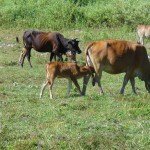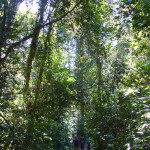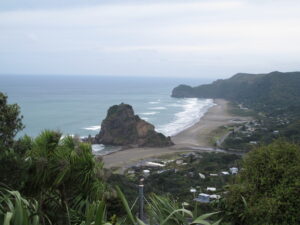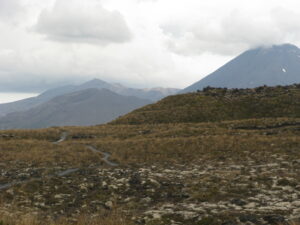
We’ve just stayed at the Kingfisher Ecolodge within the Xe Pian protected forest just about 50 miles from Pakse. It’s been a wonderful experience similar to one we enjoyed earlier this year, the Selva Bananito near the Caribbean coast of Costa Rica. Both have proved exciting and richly rewarding experiences.
Here in Xe Pian, we had a delightful, spacious cottage, built of burnished local woods and more modern plumbing features than in most U.S. park facilities. It’s as if you were doing some luxurious camping. The wood slat windows are covered with screens, but otherwise open to the air. The cool evenings are your air-conditioning, aided by an overhead fan.

It’s lights out early, partly to save energy, but also to enjoy the quiet of the night. Not much sound and plenty of starlight characterize this place after 9pm. So you almost have to enjoy the peace.
You also conserve resources by sustaining nature and by supporting the education of locals and visitors. The electricity (and water heater) is solar powered and, consequently, there are instructions about how long each of the lights will function per day. You are requested to conserve water as well – shower by turning off water when soaping, use cooler temperature water when showering, and so on, but these are good practices even in the city as well.
The foundation that runs the lodge works with the park management to teach the villagers about sustainable wildlife/practices and ensures 12% of the revenues go to them. This is a much needed project as subsistence living uses the wild resources to the point that there are very few birds in Laos, for example. They are eaten for protein, along with rats and whatever else villagers can kill. As we found, local people can be encouraged by incentives to preserve the animals and their environment.

The most obvious sign of this effort, for us, occurred during our hike through the forest, which turned into a tree rescue mission by our guide. The predatory vines that grow prolifically around here often climb spirally around the large trees that make this a forest and literally choke them of nourishment. With his machete, our guide hacked away vines threatening hundreds of these trees along the way, from young thin ones to monsters already 6 inch thick. In doing so, he made the forest a much better place for future visitors.
The best part about staying here is that you’re in the midst of natural splendor. At Xe Pian, there are two interesting ecologies, one a broad marshland with wetland birds and a lovely green expanse of plain before you; and the other, a thick forest, where tigers and local antelope still move as well as birds high up in the fruit-bearing trees.
We have been enjoying the wetlands each morning and late afternoon during our two night stay, watching the egrets and herons and plovers fish on the marsh. We explored the forest on a six hour, nine mile hike in the company of a local guide.

The walk began just past the village across a harvested rice field grazed upon by cows and their many calves and then headed into a teak forest. This quickly changed into a wild forest, sometimes illegally logged in the past, but now protected by the villagers and government. Our expert guide knew this forest and its many routes like the back of his hand. Some of the way we were on a path, other times not, wandering after him with no clue where we were. We kept expecting to see the village a few meters away since we could just as easily been going in circles for all we knew.
But, throughout the hike, we learned about the various plants villagers have known how to use for eternities, and sampled those leaves, stalks and fruits that were edible. It is amazing all the uses they have figured out, especially when one plant looks like another to us. One leaf was to stop bleeding and heal wounds, one for inducing a first pregnancy, one for healing bites, one the antiseptic betadyne we have had applied back home when giving blood, one for nausea, one for making a bird-like noise to attract birds to eat, and one reputed to grow larger breasts (which our guide seemed to consider particularly valuable). Some of the edible ones were tasty; some had no taste or were quite bitter. One was sweet, one lemony, and one almost sugary. We also sampled the inside of one stalk that tasted like a raw string bean, and apparently was just as nutritious.
Experimenting, however, is not for the unguided foreigner. We keep asking about the mushrooms we see, and most of them turn out to be poisonous. Even one of the nice looking orange fruits we saw was apparently deadly…one hour is all you get before it’s over for you.

And we glimpsed elusive birds and detected burbling woodpeckers, found slow-moving foot long millipedes, and warded off just enough mosquitoes to warrant repellent, plus found the traces of porcupines and the two day old scat of the wild tigers here.
Most glorious were the butterflies, which are abundant and diverse in Xe Pian. There are more color varieties and sizes than we have ever seen. Our path was always graced by their fluttering and flashing of color.
How engaging and enthralling to step back into the natural world, a step possible in many ways, but a primary purpose of choosing to stop in such an ecolodge.




These Laotians have a good handle on ecology and conservation. I already emulate them in the shower. I’ll pass on the rodent burgers, however. —Perry
wow!